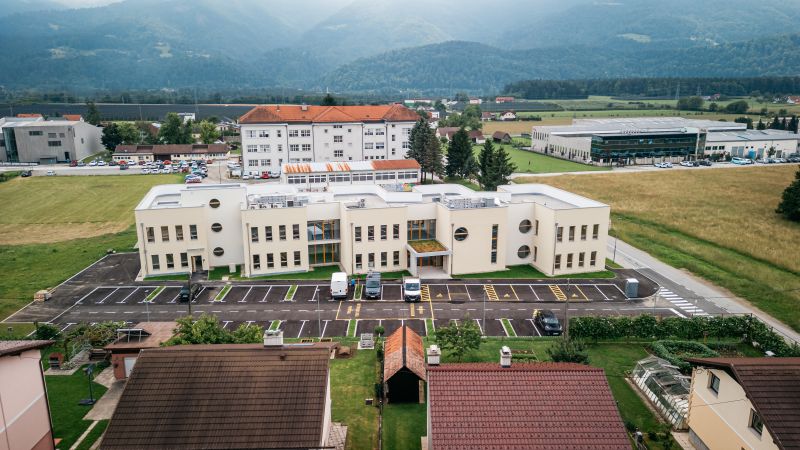Public Buildings
In the process of constructing public buildings that serve the needs of the community, it is essential to create spaces that are functional, accessible, and sustainably designed. These include kindergartens, schools, healthcare facilities, municipal buildings, cultural centers, sports halls, retirement homes, and other buildings for general public use. Our goal is for each such building to reflect the needs of the local community and provide a pleasant and safe environment for all users.
Thus, we see the construction of such buildings as a great responsibility and also a challenge – to create spaces that positively impact both the urban landscape and the people who use them. Whether it's new constructions or renovations of existing buildings, our focus is on optimizing the building’s life cycle and developing sustainable standards. Digitalization, which is changing the way we plan and build, is a constant companion in this process. As pioneers in digital infrastructure, we use integrated planning at all stages of the project to ensure the highest possible quality and long-term value of buildings for educational purposes.

Key elements of public building construction include:
Location
Choosing a suitable location is crucial for the accessibility and efficiency of the building. The location must be easily accessible to the public, connected to other public services, and supported by good infrastructure.
Planning and Design
Architectural planning must consider functionality, aesthetics, comfort, and accessibility for users, including people with limited mobility. The design must allow for efficient use of space and flexibility for various public needs.
Obtaining Permits
The construction of public buildings requires obtaining numerous permits, including building permits, environmental approvals, and other regulatory consents.
Sustainability and Environmental Responsibility
Modern public buildings increasingly incorporate sustainable practices, such as energy efficiency, the use of renewable energy sources, waste reduction, and the preservation of natural resources.
Building Materials and Technologies
The use of high-quality and durable construction materials, as well as advanced technologies, is essential for the construction and management of public buildings. It is important that the materials are safe and suitable for public use.
Infrastructure and Equipment
In addition to the basic structure, supporting infrastructure such as electrical installations, water supply, heating, cooling, ventilation, telecommunications, and IT systems is also important.
Interior Design
Interior spaces must be functionally designed and equipped to provide comfortable and efficient use. This includes public spaces, workspaces for staff, sanitary facilities, common areas, and other necessary spaces.
Safety and Security
Public buildings must meet strict safety standards, including security systems, fire alarms, evacuation plans, and other safety measures. The safety of users and employees is also important.
Accessibility
Buildings must be accessible to all users, including people with limited mobility, the elderly, and other vulnerable groups. This includes accessible pathways, elevators, ramps, and other adaptive features.
Management and Maintenance
After construction, proper management and maintenance of the building are required to ensure its long-term functionality, safety, and appeal to users.
Community Aspect
Public buildings must be designed in a way that serves the needs of the community and encourages social interaction. This includes spaces for community events, cultural activities, and social gatherings.